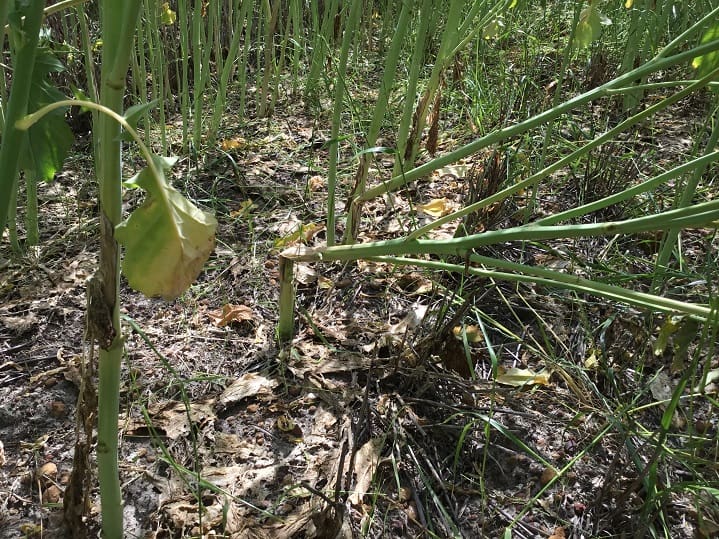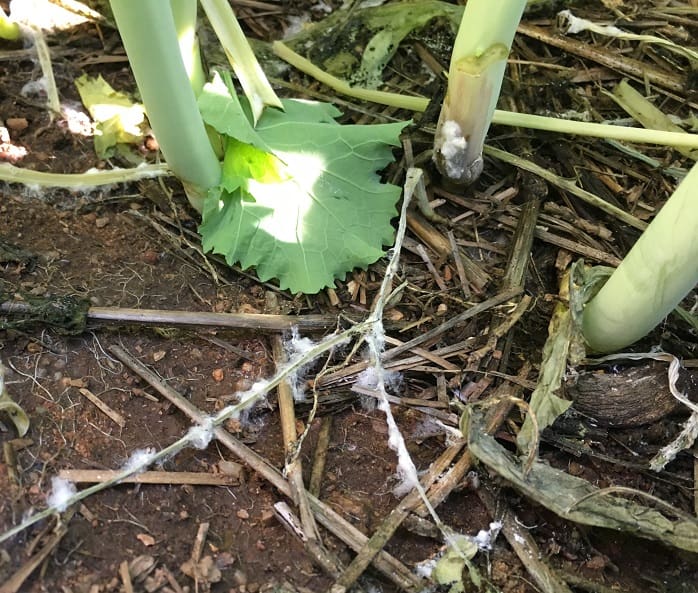
Now is the time for canola growers to use the SclerotiniaCM decision support tool to decide if they will spray their crops for Sclerotinia stem rot. Plants lodging is a sign of the disease.
CANOLA growers are encouraged to assess their risk of sclerotinia stem rot now to ensure the best economic returns from their crops this season.
Western Australian Department of Primary Industries and Regional Development (DPIRD) research scientist Andrea Hills said a good start to the season and high grain prices had seen more growers sow a record area of canola in WA this season.
“Now is the time for growers to be making a decision about whether to spray their canola crops for disease,” Ms Hills said.
“Sclerotinia stem rot can be one of the most variable and unpredictable diseases of canola and the incidence of infection varies between paddocks and between years.
“In cases of severe infection, yield losses can be more than 20 per cent, while in other situations we have good disease control from fungicide applications but no yield benefit, hence the advantage of the SclerotiniaCM decision support tool to give users confidence that they’re making the right decision for their circumstances.”
Ms Hill said there had been significant rainfall across the grainbelt over the past month, which created ideal seasonal conditions for the first stages of the sclerotinia stem rot cycle to flourish.
“There have even been reports from the Jerdacuttup area of basal stem rot, which is an unusual form of the disease that can occur before flowering through direct infection of stems,” she said.
“Generally, the areas of a paddock with the best crop growth, along with those that remain damper for longer or on fine textured soils, are more likely to have infections. After infected petals fall, stem lesions need very high humidity for a number of days to develop.”

DPIRD has received reports of basal stem rot, which is an unusual form of the sclerotinia stem rot that can occur before flowering through direct infection of stems.
Ms Hills said the timing of treatment was crucial to protect canola crops from the disease.
“If growers are going to spray crops with a registered fungicide, it must be applied prior to disease symptoms developing to be effective in reducing stem rot. This is usually during the early to mid-flowering period,” Ms Hills said.
“Using the SclerotiniaCM decision support tool to assess their risk can give growers more confidence whether or not to invest in spraying for the disease and the potential impact of an extended wet period.”
Source: DPIRD
The SclerotiniaCM decision support tool, developed by DPIRD and New South Wales Department of Primary Industries, with co-investment from the Grains Research and Development Corporation, assists growers with making a decision about whether to spray canola crops for the disease.
The tool, designed for use during the flowering stage, can be tailored paddock by paddock and takes into account the costs, yield benefits, grain prices and seasonal conditions to give growers and agronomists the best and worst case and most likely outcomes, in yield and net return, of the disease.
Growers can download the SclerotiniaCM decision support tool to their iPad or android tablet by visiting the app store or google play.
More information on sclerotinia stem rot can be found on the department’s website.

HAVE YOUR SAY